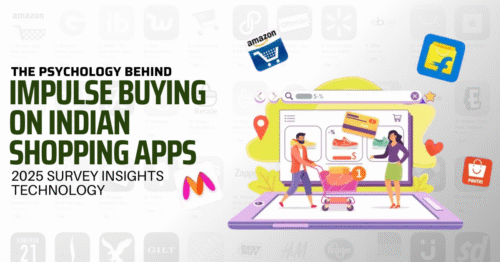Inside the Buyer’s Mind: How Psychology Shapes Purchasing Decisions (and How Neuromarketing Seals the Deal)
Ever walked into a store for toothpaste and walked out with a full basket including chocolate, a candle, and socks you didn’t know you needed?
Spoiler alert: You didn’t choose those things. Your brain did.
Welcome to the fascinating world where psychology puppeteers your purchase decisions—and neuromarketing is the master choreographer turning subconscious nudges into cha-ching moments.
Let’s Start With This: You’re Not As Rational as You Think
We humans love to believe we make decisions logically. We compare prices, evaluate features, read reviews… right?
Well, not quite.
According to Harvard professor Gerald Zaltman, 95% of our purchase decisions are made subconsciously. That means your brain is high-fiving that box of gourmet cookies long before your wallet even objects.
This is where neuromarketing enters the picture—the fusion of neuroscience, psychology, and marketing aimed at understanding how the brain responds to marketing stimuli. Sounds fancy? It’s just good ol’ brain science meets digital persuasion.
A Quick Brain Map: How Buying Happens Upstairs 🧠
Your brain has three main players during a purchase decision:
- The Reptilian Brain – Controls instinct, survival, gut reactions. Think: “Ooh, that’s shiny!”
- The Limbic System – The emotional core. Drives love, loyalty, and FOMO.
- The Neocortex – The rational thinker. Tries to justify the emotional choice with logic.
Marketers have learned that triggering emotion first, then backing it with logic is the winning combo. Which is why Apple never sells you just a phone—they sell a lifestyle, elegance, and the dopamine of being “different.”
Neuromarketing Strategies That Work Like Mind Control (Almost)
Let’s dig into some of the most powerful neuromarketing strategies you’ve definitely fallen for—probably today.
1. The Power of Color: Because Your Brain Has a Favorite Palette
Color influences up to 90% of an initial product judgment.
- Red = urgency, excitement (used in clearance sales)
- Blue = trust, calm (hello, PayPal and Facebook)
- Green = health, growth (think Whole Foods or Starbucks)
- Yellow = optimism, attention (used in “Buy Now” buttons)
Brands don’t just “pick” colors. They weaponize them.
Next time you feel good inside a store, look around. You’re probably soaking in warm tones and curated lighting.
2. Scarcity and Urgency: FOMO in Action
- “Only 2 left in stock!”
- “Offer ends in 12 minutes!”
- “Last chance to unlock 50% off!”
These are not just marketing gimmicks. They hijack your amygdala, the brain’s panic switch, and convince you that buying now is survival. Scarcity triggers loss aversion, a powerful psychological bias.
You don’t want the item more. You want to avoid the pain of losing it.
3. Social Proof: Monkey See, Monkey Buy
Why do we care about reviews and ratings?
Because we’re tribal creatures. If 1,000 people rated those headphones 5 stars, your brain assumes they must be good. Welcome to the world of herd mentality, powered by the limbic system.
- “Bestseller”
- “Most loved”
- “500,000+ downloads”
Each of these signals leverages psychology to scream: You won’t be alone in this decision.
4. Anchoring: Your Brain’s Lazy Negotiator
Ever seen a product that says:
> “Was ₹3,999. Now just ₹1,299!”
Boom—anchoring.
Our brains latch onto the first number we see and use it to evaluate value, no matter how arbitrary. Even if ₹1,299 is the actual fair price, it feels like a win.
Anchoring isn’t just for pricing—it’s used in menus, subscription tiers (“Best Value!”), and even donation forms.
5. The Power of Storytelling: Once Upon a Buy
People forget facts. They remember stories.
A 2017 study found that messages delivered as narratives are 22 times more memorable than just facts and stats.
Brands like Nike don’t sell shoes. They sell grit, dreams, and comebacks.
Storytelling bypasses logical filters and goes straight to the emotional core. And emotion? That’s the sweet spot where buying decisions live.
Neuro-Tweaks for Digital Platforms: Where Clicks Meet Cortex
If you’re a brand or marketer (wink at you, Ankit), here’s how to translate neuromarketing into your digital content:
1. Eye-Tracking Insights = Better UX
Studies show our eyes follow predictable patterns:
- F-shaped patterns on text-heavy pages
- Z-patterns on landing pages
So, place your call-to-actions (CTAs) where the eyes naturally travel. Bonus points for using faces—they attract 47% more attention.
2. Smart CTAs with Emotional Framing
- Bad: “Sign Up”
- Better: “Start Your Free Adventure”
- Best: “Claim Your Spot – Limited Access!”
Emotion-rich verbs + scarcity = irresistible.
3. Pricing That Feels Better
- Break prices into “₹999/mo” instead of a one-time “₹12,000/year”
- Use charm pricing (₹99 feels way cheaper than ₹100)
- Highlight the emotional ROI (“Just ₹5/day to unlock calm, focus, and better sleep”)
People don’t pay for products. They pay for emotions and outcomes.
Emerging Tools in Neuromarketing (aka The Sci-Fi Stuff That’s Already Real)
- fMRI & EEG Scans – Used by mega brands to track brain activity when people view ads.
- Facial Coding – AI that decodes microexpressions for emotion.
- Biometric Sensors – Measure heart rate, pupil dilation, even sweat response during ads.
Though these tools are mostly for big-league players, the insights they provide are shaping modern UX, ad creation, and even product packaging.
You might not have EEG data at your fingertips, but understanding how people feel is now just as important as knowing what they want.
Ethics Alert: Use Your Powers for Good
Yes, psychology can be persuasive—borderline manipulative if misused.
Neuromarketing is most effective (and sustainable) when trust is the goal, not trickery.
That means:
- Be transparent about pricing
- Use urgency sparingly
- Respect user privacy
If you’re building a brand that lasts, influence with empathy.
Final Thought: People Buy with Emotion, Justify with Logic
At its core, neuromarketing isn’t about gimmicks. It’s about understanding the beautiful, irrational, deeply human way we decide.
We don’t buy coffee because we need caffeine. We buy because it feels cozy, smells like mornings, and tastes like productivity.
So if you want to sell smarter, start by asking:
> “How do I make them feel something?”
Once you answer that, the clicks—and the conversions—will follow.
Follow Us | Our Services | Contact Us







